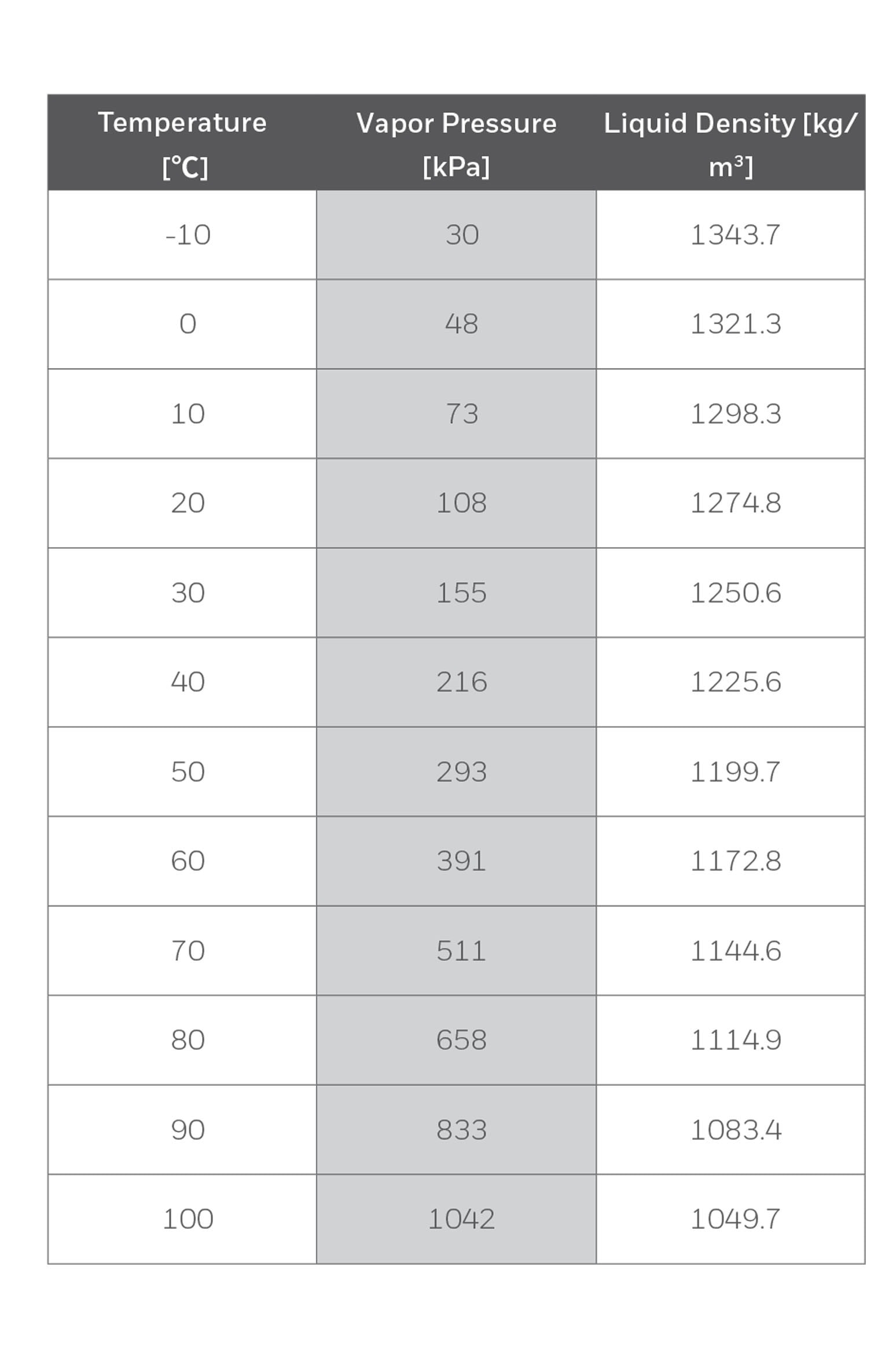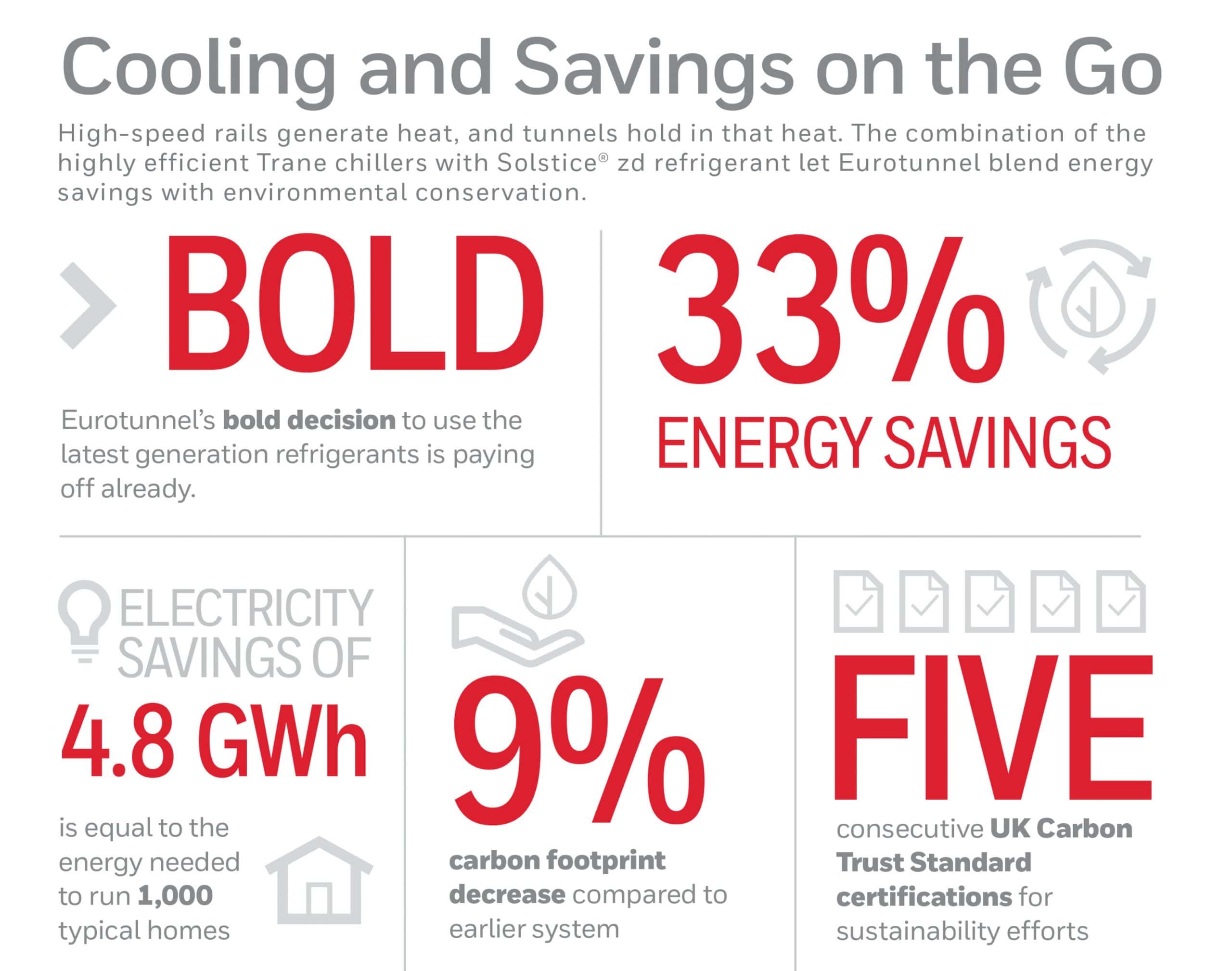R-1233zd (product name: Solstice zd) is a single component hydrofluroolefin refrigerant made to replace R123. Many manufacturers have come to adopt this refrigerant in recent years because of the chemical, physical, and thermodynamic properties it carries.
If you are a technician and you want more information on this refrigerant, this article is for you. We are going to discuss some of the properties of this refrigerant, why it came into existence, its pros, and cons. With further ado, let’s get started!
The Facts
We always like giving our readers a comprehensive breakdown of the basic properties of each refrigerant that we review. Here’s one that summarizes all the qualities of R-1233zd.
| Name: | R1233zd |
|---|---|
| Name (2): | Solstice zd |
| Chemical Name | Trans-1-chloro-3,3,3-trifluoropropene |
| Classification: | Hydrofluoroolefin |
| Chemistry Notation: | (E)CF3-CH=CCIH |
| Status: | Active & Growing |
| Future: | Will Not be Phased Out |
| System Type: | low pressure centrifugal chillers |
| Application: | high temperature heat pumps |
| Application (2): | Air Conditioning |
| Application (3): | Organic Rankine cycle |
| Application (4): | industrial air conditioning |
| Replacement For: | R-123 |
| Ozone Depletion Potential: | 0 |
| Global Warming Potential: | 1 |
| Global Warming Risk: | Very low |
| Toxicity Levels: | Low degree toxicity (A1) |
| Flammability Levels: | Class 1 - No Flame Propagation |
| Lubricant Required: | Mineral Oil |
| Boiling Point: | 18.3 °C ( 65 °F) |
| Critical Temperature: | 166.5 ℃ (331.7 °F) |
| Critical Pressure: | 36.2 bar (525.6 psi) |
| Temperature Glide: | 0 K |
| Molar Mass: | 130.50 g·mol−1 |
| Critical Density | 480.2 kg/m3 |
| Vapor Pressure: | 1.298 bar (25 °C) |
| Manufacturers: | Honeywell |
| Manufacturing Facilities: | All Over Including: USA, Mexico, EU, China, and others. |
| Form: | Gas |
| Color: | Colourless |
| Odor | Barely perceptible odour |
| EPA Certification Required: | 608 or 609 Required |
| Require Certification to Purchase? | Yes |
| Cylinder Color: | Unknown |
| Purchasing: | Buy R-1233zd in Bulk |
R-1233zd Pressure Temperature Chart
A pressure temperature chart is a tool that helps technicians identify the pressure of the refrigerant at different temperature levels. They need access to the manual when charging a system with a refrigerant or replacing it.
Without it, the technician can make significant damage to the system when charging a new refrigerant since the devices may not operate at the recommended pressure. Here’s a detailed PT chart you can use.

What is R1233zd?
R-1233zd is a single component refrigerant that belongs to the HFO class. It’s a product invented by Honeywell, which is why its product name is Solstice zd. Originally, the refrigerant was used in foam blowing. However, in recent years, many manufacturers have been using it in centrifugal chillers and high temperature heat pumps.
What Led to the Invention of this Refrigerant?
The main reason was to replace the refrigerant, R-123. R-123 was a HCFC refrigerant that also came into the market to replace R-11. It had excellent thermodynamic and physical properties that made it an energy efficient and safe replacement for R-11.
However, as countries put up strict regulations on the manufacture, use, and sale of HCFC through the Montreal Protocol, R-123 became regulated because continued use would deplete the ozone layer. In addition to that, it has a global warming potential of 77. Which makes it a candidate for potential phase out by the year 2032.
At this point is when R-1233zd came into being. It is a HFO refrigerant and has a low GWP of 1, which is a value significantly lower than that of R123 by a huge margin.
Besides this, R-1233zd has similar properties to R-123, which makes it a suitable match and replacement for systems that use R-123. For instance, both refrigerants have a critical pressure of 36 bar and critical temperature of around 160 0C (that is 166.5 ℃ to 1630F). Hence, by introducing R1233zd into your system, you get:
- An environmentally friendly refrigerant
- Energy efficient refrigerant
- And a cost effect option to R-123

Common Applications of R-1233zd
- Centrifugal chillers
They are huge installations used to cool commercial buildings such as hotels, industrial plants, airports, hospitals, etc. Centrifugal chillers provide chilled water for applications needing cooling capacity on a large scale. R-1233zd is an excellent refrigerant for this application because of its thermodynamic properties, especially its low boiling point.
Here’s an animation showing how these chillers function.
- High temperature heat pumps
Also referred to as industrial heat pumps, these units are useful in refrigeration purposes, hot water production, and upgrading waste energy that is suitable for other processes. R-1233zd is a recommended refrigerant in these units since it has a high critical temperature of 166.5 0C.
- Organic Rankine Cycle
Otherwise, known as ORC, organic rankine cycle is a type of thermodynamic cycle used in thermal engineering. A working fluid (the refrigerant) is usually pumped into a boiler where it’s evaporated. It then passes through an expansion device, a condenser, and then it’s re-condensed. R-1233zd is a recommended refrigerant for this process because it’s environmentally friendly and has similar technical properties as R245fa- which is a CFC refrigerant.
- Industrial air conditioning
Industrial air conditioners need to use a refrigerant that is economically friendly and easily available such as R-1233zd because the refrigerant is needed in large quantities. Additionally, R-1233zd is preferable in such applications because it is not flammable or toxic to the environment.
Pros of Using R-1233zd
The first and obvious benefit of R-1233zd is that it has a global warming potential of 1 and an ozone depleting potential of 0, similar to most HFOs in the market. Note that the global warming potential of this refrigerant is lower than that of R1234yf, which is a popular HFO refrigerant with a GWP of 4.
R-1233zd also has low toxicity levels and it’s a non-flammable gas. This means that it cannot cause a fire in case of an accident or leak, especially in an industrial setting where you’ll find it being used most of the time. Additionally, the low toxicity levels makes it easy to use.
It also has an odor. Normally, experts suggest that you use a refrigerant that has odor because it makes it easy for you to detect a leak before large amounts gets into the atmosphere.
Another benefit we find in the R1233zd refrigerant is that it doesn’t have a temperature glide, which contributes to its energy efficiency. Temperature glide normally occurs in refrigerant blends and not common in single component refrigerants.
What Are the Limitations of Using R-1233zd?
We noticed that R-1233zd has a high boiling point. Typically, refrigerants with a higher boiling point are only useful in low-pressure applications in large units. Hence, the reason it’s useful in centrifugal chillers that operate in low pressures.
Another problem we noticed with this refrigerant was its global warming potential. The refrigerant may not be in use in the coming years, especially after the introduction of the Kigali Amendment and the PFAS Ban, which is currently active in several countries.
If you want to know more about the PFAS Ban, click here.
Conclusion
That’s all you need to know about R-1233zd. It’s a recommendable HFO refrigerant because of its low global warming potential, non-flammability, and its contribution to providing an energy efficient system when using it. Thanks, again, for reading our article. If you have any questions about the refrigerant, feel free to contact us. We’ll be happy to hear from you.